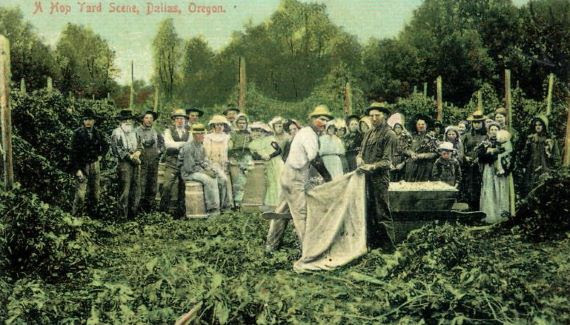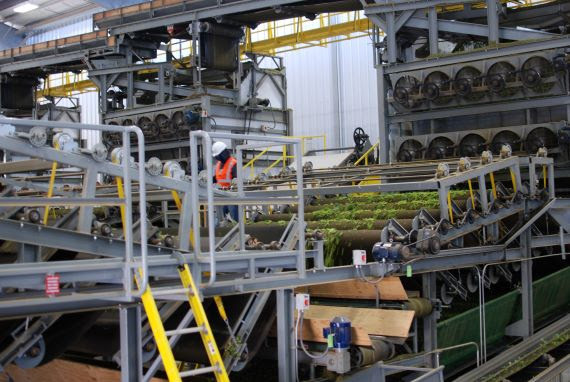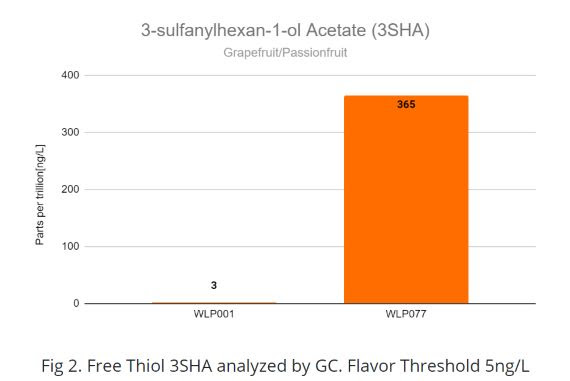Stan Hieronymus Hop Queries – September 2022 September 2022
Each month respected beer writer Stan Hieronymus produces Hop Queries, a must-read summary of what is happening in the hop world, and has kindly offered to let us publish it for Australian industry readers. If you would like to subscribe directly, you can here.
September 2022
- Disappointing harvest
- Compare & contrast
- More thiol freeing yeast
- Hop terroir redux
- To read and view
Welcome to Vol. 6, No. 5. Hop harvest is complete in much of the northern hemisphere and will be elsewhere in a matter of days. I spent last week in Washington’s Yakima Valley in learning mode, much of it talking about why by almost any standard you choose to use that hops are of consistently higher quality than in the past. I’ll be writing more about that soon, and – this may sound strange – why something may occasionally be lost in the process. Noted to let you know that’s the lens through which I view most of what I write about here.
Harvest could have gone better
A couple months ago a BarthHaas press release [Hop Queries Vol. 6, No. 3] reminded us that the hop market has been “oversupplied” recently. It’s too early to assess the impact of a disastrous harvest in the Czech Republic, a very disappointing harvest in Germany, a disappointing harvest in Washington, and slightly below average harvests on many farms in Idaho and Oregon. However, it is clear the market looks different than it did only two months ago.
Not long before the German estimates (20 percent below average) and Czech estimates (half of the Saaz harvest of a year ago!) were made the USDA predicted yields in the U.S. Northwest would exceed last year and the overall crop would be about the same as 2021. Now it appears yields in Washington, which grows more than 70 percent of the hops in the U.S., will be between 10 and 15 percent less than average.
This is not a disaster of biblical proportions (insert your favorite Ghostbuster follow up quote). Industry members I talked to last week are confident they will be able to fulfill contracts – unlike, for instance, growers in Czechia. Some varieties will be easier to acquire than others, and the spot market is more likely to be tight. I wrote more about this for Brewing Industry Guide.
Compare and contrast


It took a lot more hands to harvest hops a century ago, as the postcard from Oregon at the top illustrates. The machine below the postcard was spotted in action at Virgil Gamache Farms in Toppenish, Washington. It doesn’t look exactly like ones you’d see at Perrault Farms relatively nearby or at CLS Farms in Moxee, but they are all similar.

What is different at Gamache are the cooling rooms. My Instagram feed has been full of pictures of massive piles of hops on giant cooling floors, like this, which are pretty standard these days in the Yakima Valley. But at Gamache hops are still cooled in smaller rooms on the second floor. Standing in one is an immersive hop experience. If I were more skilled at this newsletter business I would include a video of the small tractor pushing hops from one room to another and then to a hole before they drop below to be baled. Instead, a single photo will have to do.
And in this week’s thiol-related news
Two things to know about the newest yeast blend from White Labs: a) it is designed to release bound thiol compounds, resulting in free thiols that produce tropical aromas, and b) it is not genetically modified (GMO).
They refer to WLP077 Tropicale as a high-activity beta-lyase blend, provide details how it was created and explain why beta-lyase was targeted. You surely remember why thiols are still the shiny new thing in hops.
Using Cascade, Simcoe, and Mosaic for the whirlpool and dry hop additions, they conducted a split-batch fermentation using WLP077 and WLP001 California Ale Yeast. The beers were then analyzed for free thiol concentrations and assessed by a sensory panel.

As can see, 3-sulfanylhexan-1-ol acetate (3SHA) well above the threshold for perception was found in the beer fermented with the WLP077 blend. 3SHA is often describe as smelling of passionfruit, guava, various citrus . . . and sometimes body sweat.
The sensory panel described dank, piney and resinous aromas and flavors in the WLP001 beer; and passionfruit, peach and vanilla in the WLP077 beer.
– Related.
Hop terroir – want a summary?
I’ve written enough here and elsewhere about terroir that I understand your eyes may start to glaze over when you see the word. Two issues ago I linked to details about research at Oregon State I’ve already reported on. A recent post at Eater expanded on that. Because readers come aboard every month (thank you) this may appear new, leaving me with a bit of a dilemma. Hit reply (or send an email to the address at the bottom) if you’d like to read a recap that goes back a dozen years. Otherwise, I will quit torturing you with the word until there is new research to consider.
Click and enjoy
- Philadelphia city workers destroyed all the hops in a small yard growing beside Philadelphia Brewing Company. It is not a heart warming story, but you still might smile at this: “In the meantime, the local community has come together in ways that situations like this often inspire: Since it was reported in the local media, [the brewery has] been receiving calls from local home-brewers offering to help, offering to drop off hops that they grow themselves.”
- Hop research at Oklahoma State University.
- They are further along at the University of Minnesota. (video)
Topics to explore?
Thank you for subscribing. If you have queries you’d like to see addressed drop me a line at stan@appellationbeer.com.

